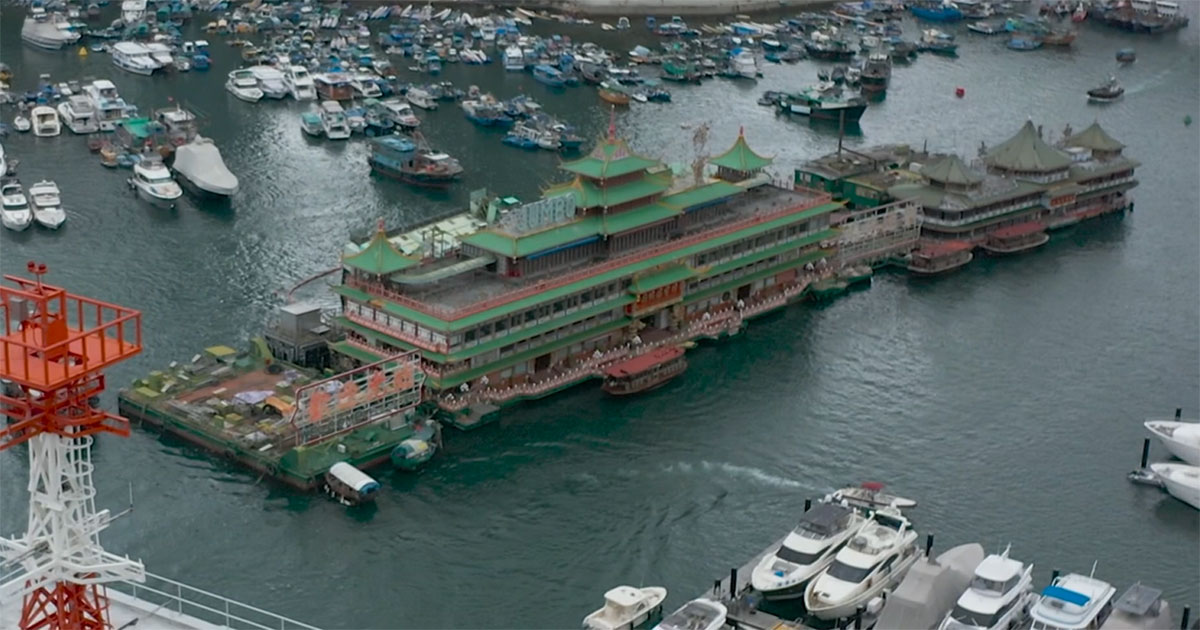Follow us on Telegram for the latest updates: https://t.me/mothershipsg
The owner of the iconic Hong Kong Jumbo Floating Restaurant has walked back on earlier claims that the vessel was beyond salvageable, instead insisting it was still in the waters near the Paracel Islands in the South China Sea.
Pressure from Hong Kong authorities likely led to this disclosure about the circumstances surrounding the apparent wreckage, which saw a shift in messaging, CNN reported.
This was also after scepticism grew over the account put forth by the vessel owner regarding the series of events that supposedly saw the vessel capsize in open sea, rendering it lost for good.
Calls for a full investigation into the incident have also grown.
The shocking news of the sinking came six days after the vessel was towed away on June 14.
The vessel capsized on June 19.
Barely four days later, the vessel was revealed to be still around.
Still in South China Sea, apparently
According to CNN, the vessel's owner, Aberdeen Restaurant Enterprises, said in a statement on June 23 that the vessel and its accompanying tugboat were still in waters near the Paracel Islands, known as the Xisha Islands in China.
The statement was vague though.
It failed to indicate whether the vessel was still afloat, or if it had become separated from its tugboat.
A request from Hong Kong's Marine Department for the restaurant group to provide a written report into the capsizing incident as part of an initial investigation prompted this revelation.
Company said it said "capsize" all along
Whether there has been a shift in messaging, a spokesman for Aberdeen Restaurant Enterprises told CNN on June 24 that the company had always used the term "capsize" to describe the incident and had never claimed the vessel had sunk.
Queried if this contradicted previous statements, the spokesperson said the firm was required "to report the depth of the waters" where the incident took place.
But the spokesperson declined to answer CNN if this meant the vessel was salvageable or remained afloat.
This sort of secrecy is not new.
It was initially unclear where the vessel was to be towed to but it was revealed by the Marine Department that it was due to be taken to a shipyard in Cambodia.
Answers that are not forthcoming could remain that way.
An investigation into the matter could take years, CNN quoted an expert saying, especially as it occurred outside of the city's jurisdiction in international waters.
No insurance payout
Subsequently, in a statement on June 26, Aberdeen Restaurant Enterprises said the company will not receive any insurance payout for the loss of the vessel.
This quelled public questions whether the sinking resulted in financial claims.
"The vessel is covered by a 'Protection and Indemnity Cover for Third Parties Liability' in accordance with maritime regulations. This insurance covers third party losses, not losses to the company," it said.
What was the confusion?
There has been confusion over whether the vessel had actually capsized or sank, and it has apparently boiled down to a matter of semantics.
While the company said in its original statement on June 20 that the vessel had "capsized", it had also added: "The water depth at the scene is over 1,000m, making it extremely difficult to carry out salvage works."
A few days later, the company reached out to some media outlets, insisting that the vessel had "capsized", not "sank", as many news reports used the word "sank" in their stories.
In its statement on Sunday, the company said its response to the incident has been "consistent".
It said its statement on June 20 stated that water had entered into the hull of the vessel, and the vessel began to tip while in the South China Sea, and capsized due to adverse conditions.
Top photo via Getty Images
If you like what you read, follow us on Facebook, Instagram, Twitter and Telegram to get the latest updates.
